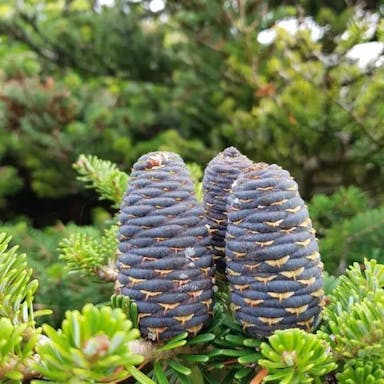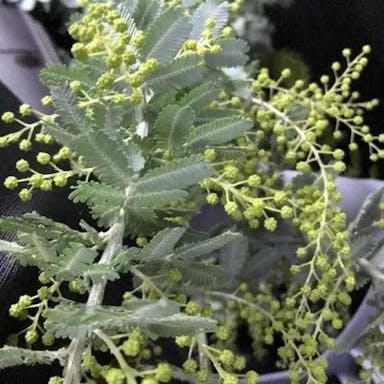Velvet mesquite thrives in well-drained sandy or gravelly soils with a pH range of 6.0 to 8.0. It prefers full sun exposure and is drought-tolerant once established. Fertilize velvet mesquite with a balanced slow-release fertilizer in early spring before new growth begins. Apply fertilizer again in late spring or early summer to support active growth. Avoid fertilizing in late summer or fall to prevent stimulating new growth that may not harden off before winter. Use a fertilizer with a 3-1-2 or 4-1-2 ratio of nitrogen, phosphorus, and potassium. Monitor soil quality and adjust fertilization based on plant response and soil test results.
Velvet mesquite
- Scientific name
- Prosopis velutina
Basic Information
- Fabaceae Family Prosopis Genus Velvet mesquite Species
- Fabaceae > Prosopis > Prosopis velutina
- 83%
- The Completeness of This Encyclopedia
Please help us complete the encyclopedia, Terrarium is a encyclopedia service to be completed with everyone in the world. Currently, this page is 83% complete. For more information on how to contribute, please click here.
- Tree
- Height
- 1000cm ~
- Flower Color
- Leaf Color
- Anthesis
- spring, summer
- Sunlight Exposure
Full Sun Long hours of sunlight from morning to afternoon Partial Shade A location in the shade of a tree or where either the morning or afternoon is shaded Full Shade A place where there is no direct sunlight
- Full Sun
- Hardiness Zones
This is an indicator to know to which zone each plant can winter. Knowing the zone of each plant gives you an idea of the cold temperature resistance when grown in the ground without a roof. 2: -42.7 to -40.0 3: -39.9 to -34.4 4: -34.3 to -28.9 5: -28.8 to -23.3 6: -23.2 to -17.8 7: -17.7 to -12.2 8: -12.1 to -6.7 9: -6.6 to -1.1 10: -1.0 to 4.4 11: 4.5 to 10.0
- 9
- Cold resistance
- Fair
- Heat resistance
- Excellent
- Habitat of origin
- United States
- Growth Rate
- Fast
What is Velvet mesquite (Prosopis velutina)?
What is Velvet mesquite (Prosopis velutina)
Flower meaning
Velvet mesquite requires pruning to maintain its shape, remove dead or damaged branches, and promote new growth. Pruning is best done in late winter or early spring before new growth appears. To prune, use clean, sharp tools to make cuts at a 45-degree angle just above a bud or lateral branch. Remove any crossing or crowded branches to improve air circulation and sunlight penetration. After pruning, apply a balanced fertilizer to encourage healthy regrowth. Avoid heavy pruning, as it can stress the plant. Regular light pruning is recommended to keep the Velvet mesquite healthy and looking its best.
Calendar of Velvet mesquite (Prosopis velutina)
Calendar
For Velvet mesquite, watering frequency should be adjusted based on the season. During the growing season in spring and summer, water deeply every 2-3 weeks. In winter, reduce watering to once a month to prevent root rot. Ensure the soil is well-draining to avoid waterlogged conditions. Check soil moisture by inserting a finger into the soil; water when the top 2 inches are dry. Adjust watering amounts based on the plant's size and environmental conditions. Avoid overwatering, as it can lead to root rot and other issues. Proper watering is crucial for the health and growth of Velvet mesquite.
How to grow Velvet mesquite (Prosopis velutina)
Watering
Velvet mesquite thrives best when potted in well-draining soil with a pH of 6.0 to 7.5. Ensure the pot has drainage holes to prevent waterlogging, which can lead to root rot. When planting, place the mesquite in a pot that is 2-3 times larger than its root ball, and water thoroughly. Repot every 2-3 years in the spring, refreshing the soil mix. Mist the leaves occasionally to increase humidity, especially in dry indoor environments. Avoid over-fertilizing, as mesquite is sensitive to excess nutrients. Regularly check for pests like spider mites and scale insects.
Soil and Fertilizer
Velvet mesquite is susceptible to various pests and diseases, including mesquite borers, spider mites, and mistletoe. Mesquite borers are beetles that bore into the trunk, causing structural damage. Spider mites are tiny pests that suck sap from leaves, leading to discoloration and leaf drop. Mistletoe is a parasitic plant that weakens the tree by drawing nutrients. Prevention methods include maintaining tree health through proper watering and fertilization. Regularly inspecting the tree for signs of pests or diseases can help catch issues early. Pruning infected branches and removing mistletoe can also prevent further spread. Withering in velvet mesquite can be caused by a combination of factors, including water stress, nutrient deficiencies, and pest infestations. Proper care and monitoring are essential to ensure the plant's health and longevity.
Sunlight and Place
Velvet mesquite propagates best through seeds, which should be scarified before sowing to enhance germination. Seeds can be sown directly in well-draining soil or started indoors in pots. Division can also be used, separating the root ball into sections with shoots attached. Cuttings from young, green stems can be rooted in a moist, sandy medium. Leaf cuttings are another option, where healthy leaves are placed in a soil mix to develop roots. To maximize propagation success, a combination of these methods can be employed, ensuring a higher chance of establishing new plants.
Advanced Information of Velvet mesquite (Prosopis velutina)
Pruning
Velvet mesquite typically blooms in late spring to early summer in the United States. The flowers of this plant are at their best during the month of May. Blooming usually occurs for a period of 2-4 weeks, depending on environmental conditions. To extend the blooming period, ensure the plant receives adequate sunlight, water, and nutrients. Pruning dead or damaged branches can also promote more blooms. Additionally, avoiding over-fertilization can help maintain a healthy blooming cycle.
Planting and Harvest
Velvet mesquite has several varieties, such as V1, V2, and V3. V1 is known for its drought tolerance and rapid growth. V2 is preferred for its high seed production and adaptability to various soil types. V3 is recognized for its superior wood quality and resistance to pests. When selecting seeds, choose plump, firm ones without signs of damage. For seedlings, opt for those with healthy green leaves and well-established root systems. Ensure the supplier provides detailed information on the variety and growing conditions. Conduct research on the specific requirements of each variety before making a purchase.
Propagation
Velvet mesquite, scientifically known as Prosopis velutina, is a deciduous tree native to the southwestern United States and northern Mexico. It belongs to the Fabaceae family and is characterized by its velvety, gray-green compound leaves and twisted, thorny branches. The tree produces small, yellow-green flowers that bloom in cylindrical spikes, attracting pollinators like bees and butterflies. The flowers give way to long, twisted pods that contain small, hard seeds. Velvet mesquite is valued for its drought tolerance and ability to thrive in arid environments. It can reach heights of up to 30 feet and has a spreading canopy. The tree is often used in landscaping for its ornamental value and as a source of shade in hot climates. Its wood is prized for its strength and durability, used in furniture making and woodworking. Overall, Prosopis velutina is a resilient and versatile plant that plays a significant role in arid ecosystems.
Pests and Diseases
The flower language commonly used in America for the Velvet mesquite plant is resilience and strength. Examples of the language of flowers: - Red rose: Love and passion - Sunflower: Adoration and loyalty - Lily of the valley: Happiness and humility Explanation: The Velvet mesquite, symbolizing resilience and strength, reflects the plant's ability to thrive in harsh desert environments. This flower language signifies the plant's adaptability and perseverance in challenging conditions, making it a symbol of endurance and determination.
Habitat of Velvet mesquite (Prosopis velutina)
Habitat
Toxicity of Velvet mesquite (Prosopis velutina)
Health Benefits
- edible
- Inedible
- Toxic
- No toxicity
NO DATA
Toxic for dogs and cats
NO DATA
Q&A of Velvet mesquite (Prosopis velutina)
- Is there a recommended way to choose Velvet mesquite?
Velvet mesquite thrives in full sun exposure, requiring at least 6 hours of direct sunlight daily. It exhibits excellent heat tolerance, making it suitable for hot climates. The plant can withstand high temperatures but may struggle in extremely cold conditions. It is best suited for USDA hardiness zones 9-11. During winter, protection from frost is advisable. Optimum temperatures range between 65-90°F, with higher temperatures promoting growth. Over summer, adequate watering is crucial to combat heat stress. In winter, reducing watering helps prevent root rot. Placing Velvet mesquite in well-draining soil and avoiding waterlogged conditions is essential for its health. It is a sun-loving plant that flourishes with ample sunlight.











